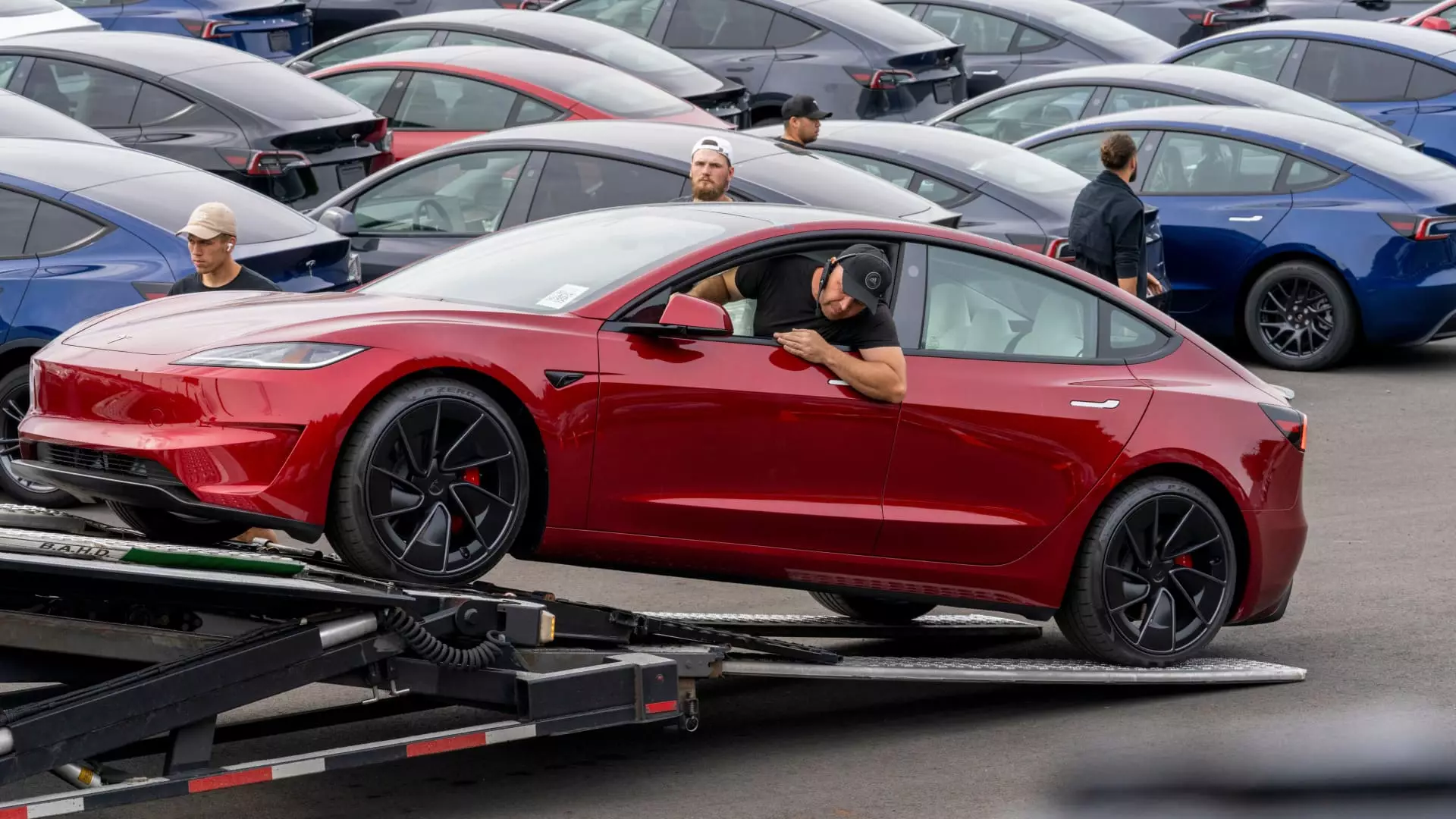Tesla, known for revolutionizing the electric vehicle (EV) industry, recently released its third-quarter performance report. The expectations surrounding this tech giant are perpetually high, but its latest figures reveal a complex blend of challenges and prospects that influence its market trajectory. With stock fluctuations and intensifying competition, a deep dive into the implications of Tesla’s recent figures offers valuable insights into the company’s future direction.
In Q3 2024, Tesla reported total deliveries of 462,890 and production of 469,796 vehicles. These numbers slightly underperformed against analyst expectations, which were set at 463,310 deliveries. This slight shortfall had immediate effects, leading to a decrease in Tesla’s stock by as much as 3.7% on the following Monday. Historical comparisons indicate that Tesla has made strides since last year—a marked increase from 435,059 deliveries in Q3 2023. However, the current production figures illustrate a more restrained growth trajectory than investors might have hoped for, particularly following a substantial climb in total vehicle production.
This year’s figures suggest that, while production is up, the growth rate appears stagnated. Last quarter alone saw 443,956 deliveries and 410,831 produced vehicles—making the year-on-year increases notable yet perhaps insufficient to allay Wall Street’s expectations. Clarity on Tesla’s future growth strategies will be crucial, especially when considering how pivotal delivery numbers are in evaluating the company’s operational health.
Tesla’s dominance in the EV sector is continually being challenged, particularly in international markets. In China, automakers such as BYD and Geely, alongside new entrants like Li Auto and Nio, are intensifying competitive pressures. This increasing rivalry not only threatens Tesla’s market share but also highlights a potential erosion of its brand image in key markets. In the U.S., traditional automakers like Ford and General Motors, once slow to adapt, are rapidly expanding their EV lineups. GM’s reported 60% increase in EV sales reveals the momentum of competition, albeit its overall EV sales remain dwarfed by Tesla’s figures.
The entrance of Ford, which will disclose its latest results shortly, and the growth of other manufacturers complicate Tesla’s landscape further. The automotive industry’s shift towards electrification has led both new and legacy manufacturers to revamp strategies, thereby tightening the market for Tesla’s offerings. The rising competition indicates that Tesla must not only maintain its current market share but also innovate to retain its leadership position.
While Tesla’s stock has seen a 32% climb in the third quarter, there are underlying tensions affecting investor sentiment. Numerous challenges arise from CEO Elon Musk’s controversial public persona and statements that often dominate headlines, from political endorsements to inflammatory commentary on social media. Such controversies can adversely affect customer loyalty and brand perception, creating a potential disconnect between the company and its core values, which Tesla built heavily on innovation and sustainability.
Despite these challenges, Tesla has maintained its position as the leading seller of battery electric vehicles in the U.S., significantly outpacing Hyundai. However, understanding consumer sentiment and mitigating the negative impact of CEO antics will be essential as the company navigates an increasingly polarized market.
Aside from vehicle production, Tesla’s deployment of 6.9 GWh of energy storage products indicates its commitment to diversifying its offerings. This segment may serve as a stabilizing factor amidst the competitive challenges faced in the automotive market. Moreover, with the upcoming marketing event set for October 10, all eyes will be on Tesla’s unveiling of the “dedicated robotaxi” design. The promise of self-driving cars has yet to be fully delivered, and the company’s ability to showcase genuine advancements in autonomy could sway investor confidence and consumer interest.
As Tesla prepares its third-quarter earnings report, profit margins will be a critical area of concern for investors, especially given the current incentives and financing strategies employed in China and the U.S. The future trajectory of Tesla depends not just on vehicle sales but also on how well it can adapt to market dynamics, outmaneuver competitors, and sustain consumer loyalty amidst controversies.
While Tesla’s third-quarter performance illustrates both growth and challenges, its ability to navigate the complexities of the EV market, maintain its reputation, and innovate will critically define its future success.


Leave a Reply